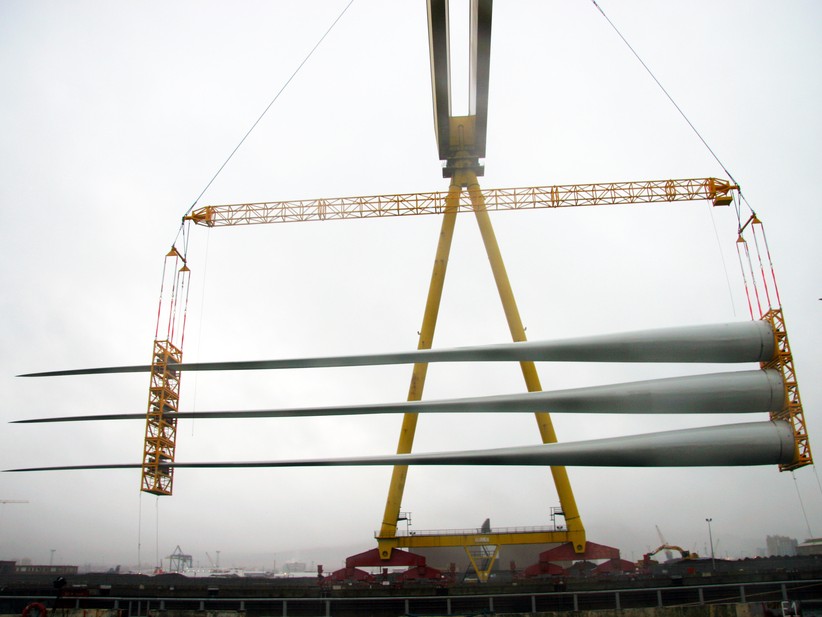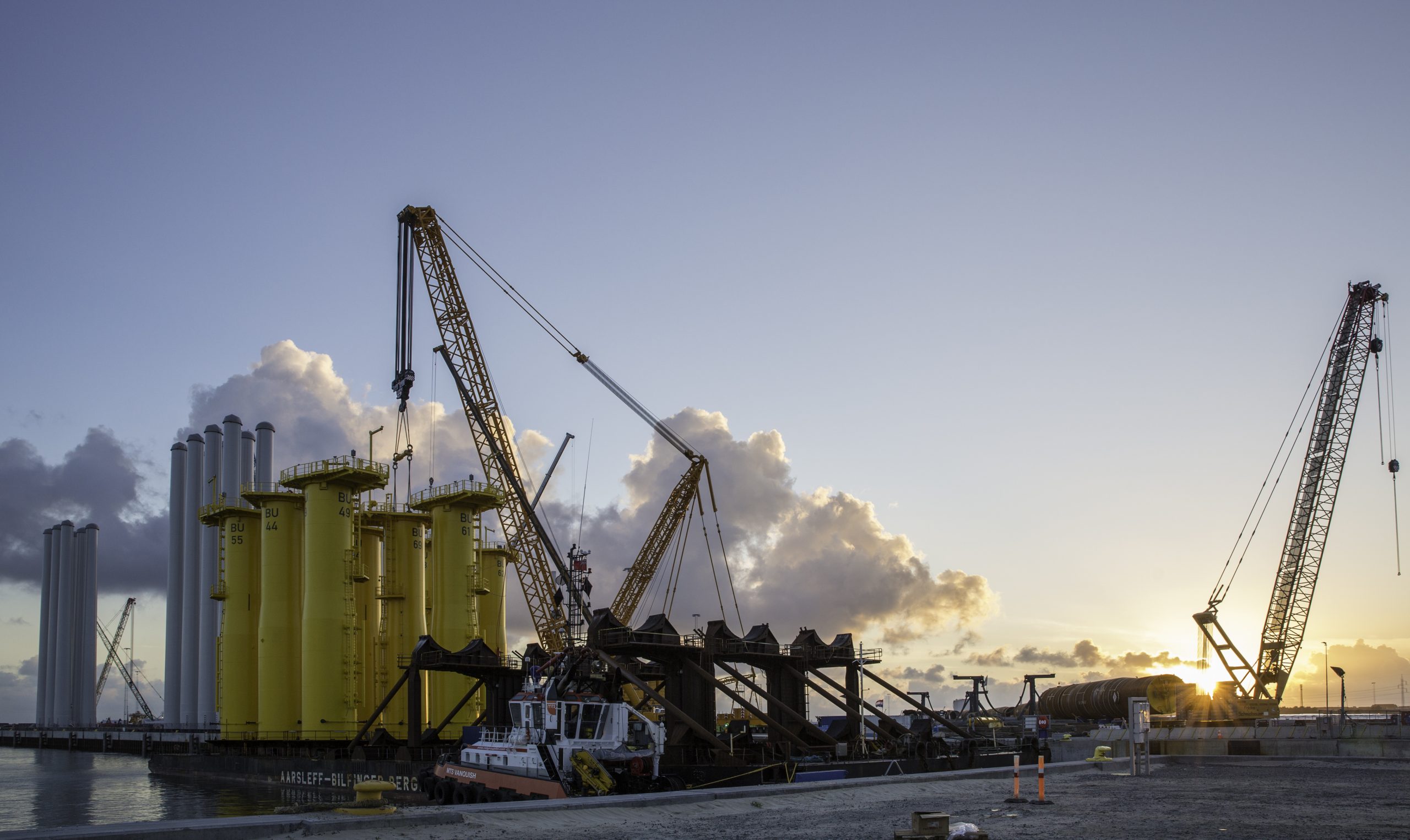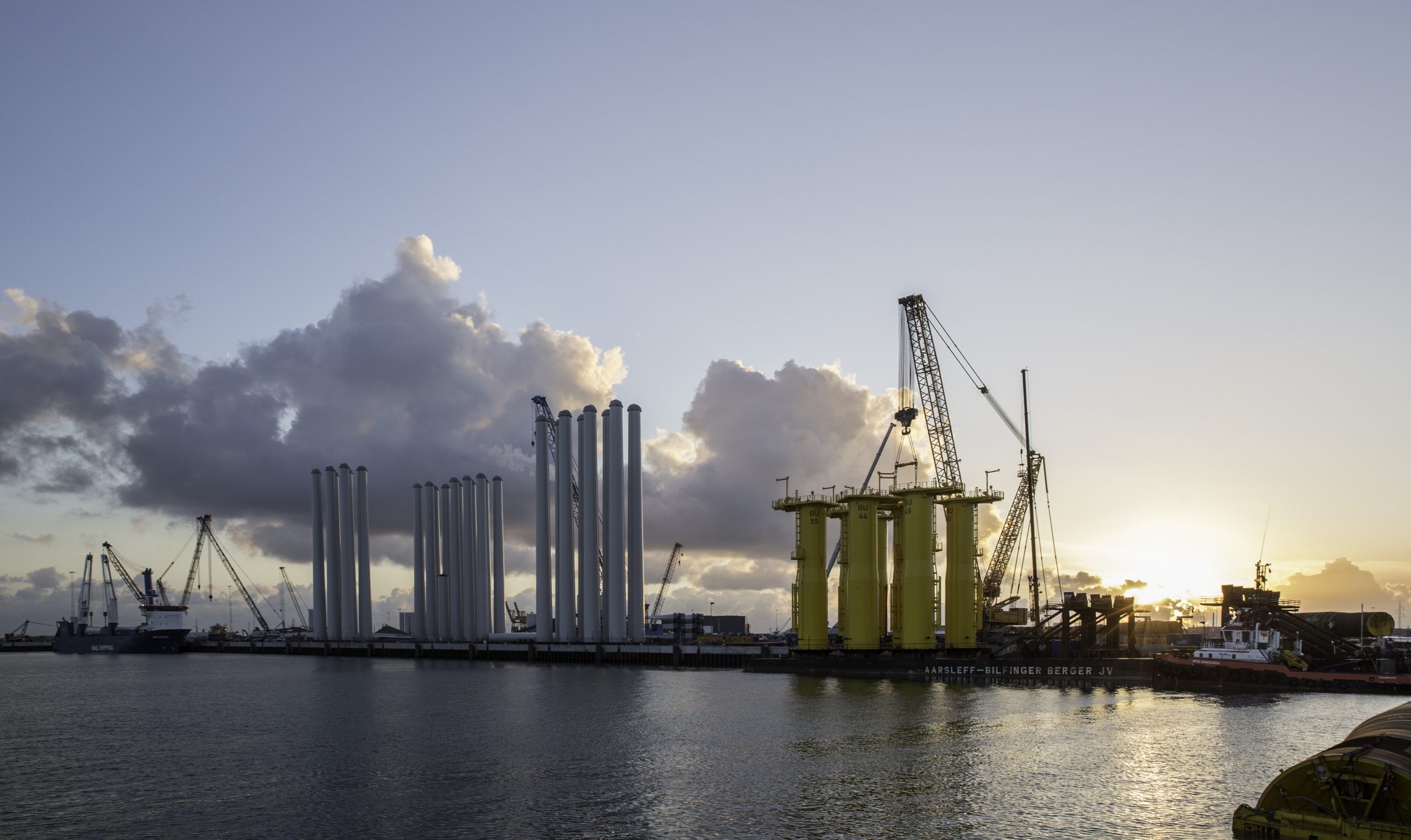Sustainability in Lifting: Engineering a Greener Future

- Sourcing of raw materials
- Sustainable Materials and Recycling
- Long Product Lifespan
- Efficient Manufacturing Process
- Energy Efficiency
- Transportation and Logistics
- End-of-Life Considerations
- Compliance with Environmental Regulations
- Corporate Social Responsibility (CSR)
- Customer Education and Awareness
- Summary of Modulift’s Environmental Considerations
Modulift have recognised the importance of addressing environmental concerns throughout the lifecycle of their products. While their primary focus is on delivering high-quality, safe, and efficient lifting solutions, Modulift has taken steps to mitigate the environmental impact associated with the design, manufacturing, use, and end-of-life stages of their spreader beams. Here are several ways Modulift has considered environmental sustainability.
Sourcing of raw materials
Modulift’s decision not to import steel from the Far East, where much of the steel is produced, is a strategic move that supports their sustainability goals. By sourcing steel locally or from nearby regions, Modulift can significantly reduce the environmental impact associated with transportation, promote higher environmental standards, and support local economies. Here’s how this decision enhances Modulift’s sustainability:
- Reduced Carbon Footprint from Transportation
- Minimising Long-Distance Shipping: Steel imported from the Far East involves long transportation routes, typically by sea freight, followed by road or rail transport. Shipping heavy materials like steel over long distances leads to significant carbon dioxide (CO₂) emissions from the fuel burned in ships and trucks.
- Local Sourcing Reduces Emissions: Modulift minimises the distance that steel needs to travel, which in turn reduces fuel consumption and associated emissions. This has a direct positive impact on reducing Modulift’s overall carbon footprint, contributing to more sustainable production processes.
- Higher Environmental and Labour Standards
- Stringent Environmental Regulations: Countries with advanced environmental regulations typically have stricter controls over pollution, waste management, and resource efficiency in steel production. Modulift’s decision to source steel locally from regions with higher environmental standards ensures that the steel they use is produced with fewer environmental impacts, including lower emissions of greenhouse gases and pollutants like sulphur dioxide (SO₂) and nitrogen oxides (NOx).
- Avoiding Low-Standard Production: Steel production in some regions, including parts of the Far East, may not always adhere to stringent environmental standards. These regions often rely on coal-fired energy, which results in higher emissions, and may lack robust pollution controls. By avoiding steel from these areas, Modulift supports more responsible and environmentally friendly production practices.
- Support for Local Economies
- Boosting Local Steel Industries: By choosing not to import steel from the Far East, Modulift supports local and regional steel industries. This not only contributes to local economic growth but also fosters a more resilient and sustainable supply chain. Supporting local industries encourages job creation, infrastructure development, and economic stability in regions with more sustainable production practices.
- Shorter Supply Chains: Local sourcing reduces dependence on global supply chains, which can be volatile due to geopolitical tensions, economic disruptions, or global trade issues. This makes Modulift’s supply chain more resilient, reliable, and sustainable.
- Transparency and Accountability
- Better Oversight: Sourcing steel locally gives Modulift more control and visibility over the production processes used by its suppliers. Local steel manufacturers are often subject to higher levels of scrutiny and accountability from governments, environmental organisations, and the public. This increases transparency around production practices, ensuring that sustainability claims are more credible and verifiable.
- Corporate Social Responsibility (CSR): By sourcing steel closer to home, Modulift can engage more easily with its suppliers, ensuring that their operations align with Modulift’s CSR goals and environmental standards. This improves supply chain integrity and ensures that all parties adhere to sustainable practices.
- Reduction in Energy Intensity of Production
- Cleaner Energy Sources: Steel production in many regions that Modulift may source from is increasingly powered by renewable energy or more energy-efficient processes, such as Electric Arc Furnaces (EAF). These processes allow the use of recycled scrap steel and are significantly less energy-intensive than the blast furnaces often used in some parts of the Far East, which rely heavily on coal.
- Lower Emissions from Production: By sourcing steel from regions with cleaner energy grids, Modulift ensures that the steel they use has a lower carbon footprint from the outset. This reduces the environmental impact of the steel even before it reaches Modulift’s manufacturing processes.
Sustainable Materials and Recycling
- Recyclability of Steel: Modulift primarily uses high-grade steel for their spreader beams, a material that is highly recyclable. At the end of the product’s life, the steel can be melted down and reused in other applications, significantly reducing waste and the need for virgin materials. Modulift’s focus on steel aligns with broader sustainability goals, as steel recycling conserves raw materials, reduces energy consumption, and minimises emissions associated with steel production.
- Optimised Material Usage: Modulift designs its products to use the minimum amount of material necessary to achieve the required strength and safety standards. This helps reduce material waste in manufacturing and decreases the overall weight of the beams, which can positively impact transportation efficiency and fuel consumption.
Long Product Lifespan
- Durability and Reusability: Modulift spreader beams, lifting beams and spreader frames are known for their durability, which extends the lifespan of their spreader beams and reduces the need for frequent replacements. By designing robust products that can withstand heavy usage over time, Modulift minimises the environmental impact associated with manufacturing new products. The longer a product lasts, the fewer raw materials, energy, and emissions are needed to create replacements.
- Modular Design: Modulift’s spreader beams are modular, meaning they can be reconfigured or adapted to different lifting requirements. This flexibility allows companies to reuse the same beams for a variety of projects, reducing the need for new equipment and further reducing waste.


Efficient Manufacturing Process
- Lean Manufacturing Principles: Modulift emphasises efficiency in their manufacturing processes. Lean manufacturing principles, which reduce waste and optimise production efficiency, help to minimise energy consumption and material waste. This not only reduces costs but also lowers the overall environmental footprint of the manufacturing process.
Energy Efficiency
- Optimised Lifting Solutions: By offering spreader beams designed for optimal load distribution, Modulift helps companies reduce the number of lifts needed for large or complex loads. Fewer lifts can result in lower fuel consumption for cranes and other heavy lifting machinery, indirectly reducing carbon emissions and energy use during operation.
- Reduction in Crane Size: Modulift’s spreader beams allow for safer and more efficient lifting of heavy loads, potentially reducing the size of cranes needed for certain jobs. This can lead to further reductions in energy consumption and emissions from the cranes used in industrial operations.
Transportation and Logistics
- Modular and Lightweight Design: The modular design of Modulift spreader beams allows for easier transportation. By shipping components separately and assembling them on-site, Modulift can reduce the overall transportation footprint. Smaller, lighter shipments require less fuel and generate fewer emissions during transportation compared to fully assembled, heavier units.
- Global Distribution with Local Warehousing: Modulift serves a global market but works with regional distributors and warehouses. This strategy helps reduce the distance products need to be shipped, further cutting down on transportation emissions.
End-of-Life Considerations
- Recycling Initiatives: As steel is fully recyclable, Modulift encourages the recycling of their spreader beams at the end of their useful life. Many of the components in Modulift’s products can be repurposed or recycled, contributing to a circular economy and reducing the demand for virgin materials.
- Product Reconditioning: Modulift’s products are designed with reusability in mind. They can often be reconditioned or adapted for new projects rather than being discarded. This reduces waste and minimises the environmental impact of disposing of large steel components.
Compliance with Environmental Regulations
- ISO Certifications: Modulift adheres to relevant ISO standards, including environmental management certifications such as ISO 14001. This ensures that their manufacturing processes are aligned with internationally recognised environmental management systems, which include efforts to reduce pollution, manage resources efficiently, and minimise waste.
- Sustainability and Safety Standards: By complying with international safety and environmental standards, Modulift ensures that its products not only meet the highest safety requirements but also reduce negative environmental impacts throughout their lifecycle.
Corporate Social Responsibility (CSR)
- Modulift incorporate CSR initiatives that focus on sustainability, such as reducing energy usage, minimising waste, and recycling materials in their operations. Modulift also engages in initiatives aimed at reducing their carbon footprint, whether through more efficient energy use in their facilities or supporting reforestation and carbon offset programs.
Customer Education and Awareness
- Encouraging Efficient Use: Modulift provides detailed information on how to use their products safely and efficiently. Proper use of spreader beams minimises the risk of damage and extends the life of the product, reducing the environmental impact of premature replacement. Educating customers on the modular nature of their products also encourages reuse and adaptability for different projects.
- Promoting Sustainable Practices: By highlighting the recyclability of steel and encouraging the proper maintenance of their products, Modulift fosters sustainable practices among its customers. This education helps ensure that products are not discarded unnecessarily and that they are disposed of in an environmentally responsible way.
Summary of Modulift’s Environmental Considerations
- Recyclability: Modulift uses recyclable materials like steel, promoting circularity and reducing waste.
- Sustainable material sourcing: Modulift adopts a local purchasing policy which promotes the use of locally produced materials, including steel. Modulift discourage the import of steel from the Far East.
- Long Lifespan: The durable and modular design of spreader beams extends their useful life, minimising the need for frequent replacements.
- Efficient Manufacturing: Lean manufacturing and local sourcing help reduce material and energy waste during production.
- Optimised Use: Spreader beams are designed to improve efficiency in lifting operations, which can reduce energy consumption and emissions.
- Recycling and Reconditioning: End-of-life recycling and product reconditioning reduce waste and environmental impact.
By integrating these considerations into their business model, Modulift demonstrates a commitment to sustainability and reducing the environmental impact of their spreader frames and beams.